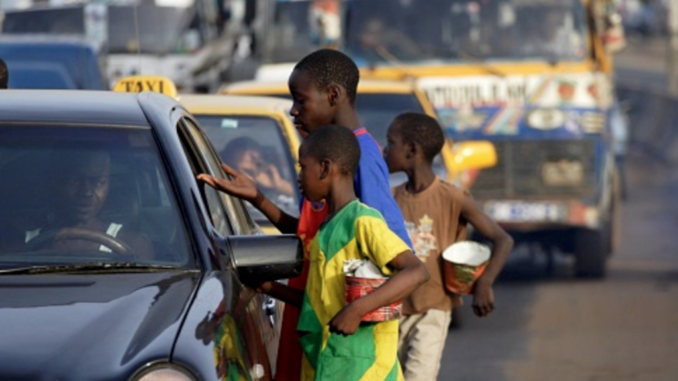
Whatever their merits, none of these discussions (especially the new ones) around how best to structure poverty intervention programmes will make the grade in our space until we have solved the problem of who is a Nigerian!
The “poor and vulnerable”! I doubt if there is a more clichéd phrase in discussions about the economics of development. Yet, the phenomena to which the concept speaks is real. As palpable as the gaunt, bedraggled face of want pressed passive-aggressively against your vehicle’s side-windows, demanding its share of your purse, as you wind your way through dense traffic in Lagos. As real as the consumption opportunities lost to the economy from having a disproportionately large share of its populace living below poverty levels. And as biting as is the injury to society’s fabric, when active portions of this latter category respond to a call to arms against the “established order” as solution to their marginalisation.
How useful was it, then, that all of these themes were once again resurrected and melded in the renewed conversation around what we ought to do as an economy with the pump-gate subsidy for petrol. At least, on one aspect of this dialogue, there’s general agreement: that the subsidy, as currently structured, is a freebie to segments of the populace who can afford to pay market rates for petrol. Yet, the fabled “poor and vulnerable” would still be adversely affected by domestic petrol prices moving to the rate at which the market clears the demand and supply for the product. Whether because their transport costs go up, or because of the pass-through of higher transport costs to their daily purchases, it would matter to indigent segments of our population when, finally, we normalise the downstream oil and gas market.
Equally, beyond dispute is the acknowledgement that government will see improvements to its finances from the removal of the subsidy. Just as it is agreed that a portion of this gain ought to go back to helping the poor and vulnerable respond to the higher general prices that come off the resulting increase in the petrol price.
India’s Aadhaar — the world’s largest biometric ID system — is an example of what is possible in this field. Tied to bank accounts it has allowed governments in that country pay support monies for the poor directly into their bank accounts — bypassing the respective bureaucracies.
The difficulty, though, as the finance minister put it in her response to the International Monetary Fund’s request that we consider cutting back the subsidy, is that we haven’t found a formula that squares this circle. A big part of the unsolved arithmetic is that nearly always, the cost of the bureaucracy established to manage pro-poor interventions is a significant portion of the monies set aside. In the Nigerian example, it is a fair bet that 70 per cent of the intervention budget would end up as administrative costs — reducing the sums that eventually reach the intended beneficiaries. This makes it important that ways are found to short-circuit bureaucracies in the administration of poverty alleviation schemes.
Fortunately, recent developments hold out the possibility of solutions along these lines. On one hand, improvements in our payment systems — including the unique biometric identification arrangement that is the “bank verification number”, technologies around the mobile payment systems deployed by most banks, and the ubiquity of the mobile phone — and the proliferation of biometric databases across the country (banks, mobile phone companies, the National Identify Management Commission, the Federal Road Safety Commission, and the Independent National Electoral Commission) all mean that we may better target the delivery of pro-poor interventions.
India’s Aadhaar — the world’s largest biometric ID system — is an example of what is possible in this field. Tied to bank accounts it has allowed governments in that country pay support monies for the poor directly into their bank accounts — bypassing the respective bureaucracies. However, as sophisticated as even Aadhaar is, it is yet to cross a high hurdle: how to identify the poor, and where they are located in the economy. This is not just a question of the difference in definition between the urban and rural poor, nor is it about how both aspects of this one problem manifest themselves across the economy.
…experts are beginning to argue that a programme for pro-poor policies that is unlikely to breach the spirit of the policies is one that sets out to identify society’s affluent, and the classes immediately below them. And then to exclude these from the payment of a flat rate to every other adult citizen of the country.
It is more about the gradations of poverty, its relativeness, and the rather fluid state of things at the bottom of the pyramid. At one remove, this has made it easy for administrators of poverty alleviation schemes, especially at the municipal levels, to divert support to their kith and kin without breaking the letter of such programmes.
At a further remove, experts are beginning to argue that a programme for pro-poor policies that is unlikely to breach the spirit of the policies is one that sets out to identify society’s affluent, and the classes immediately below them. And then to exclude these from the payment of a flat rate to every other adult citizen of the country. The appeal of this perspective is the ease with which the excluded category may be far more easily identified than would be the case were the challenge to identify the “poor”.
Whatever their merits, none of these discussions (especially the new ones) around how best to structure poverty intervention programmes will make the grade in our space until we have solved the problem of who is a Nigerian!
Uddin Ifeanyi, journalist manqué and retired civil servant, can be reached @IfeanyiUddin.
END

Be the first to comment